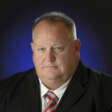CX Exchange 2023: NASA’s Bob Gibbs on creating an out-of-this-world culture
The space agency has ranked No. 1 as the best place to work in government for 11 years. NASA’s Robert “Bob” Gibbs credits a culture that has developed over...
For the 11th year in a row, NASA topped the Best Places to Work large agency rankings from the Partnership for Public Service.
Its engagement and satisfaction scores of 84.3 out of 100 were 10 points higher than the second-place agency, the Department of Health and Human Services.
The space agency’s sustained success doesn’t happen because senior leaders focus on these rankings. Rather it happens because they focus on their employees from the time they interview as applicants to the time they retire, said Robert “Bob” Gibbs, associate administrator for the Mission Support Directorate at NASA.
“We’ve never had a meeting saying how are we going to improve our Federal Employee Viewpoint Survey scores? There’s a very strong cultural foundation that’s established at NASA, which is you have leaders that care about their people and people that care about the mission,” Gibbs said during the Federal News Network 2023 CX Exchange.
Though he acknowledged that sounds simplistic, Gibbs pointed out that the culture at NASA has been built over decades of working on an incredibly challenging mission — “with great people giving their all to try and make some incredible things happen, not only for the nation but for the world.”
When asked by other federal colleagues or friends about how to replicate that culture, Gibbs jokingly said, “I say, ‘Well, you have to go get astronauts first. After you get some astronauts, you need to go to the moon,’ and those sorts of things. It’s really not that. It’s about listening to your employees. It’s about caring about what they have to say. It again may sound simplistic, but I think you can go a long way if you actually listen, and you’re willing, as a leadership team, to take action on what you’ve heard.”
As to how NASA stays atop the rankings, he said the answer is both simple and complex. He shared how the space agency continues to evolve its employee-first approach.
Embrace an employee-first culture
NASA makes it a priority to create a culture where everyone is working toward a similar goal, has the responsibility and encouragement to offer suggestions or speak up about problems, and leadership is expected to address concerns in a public and timely manner.
“The Artemis architecture sets the framework for the agency so that all of the agency and all of our partners, national and international, can see themselves in that equation,” Gibbs said. “When you’re talking about listening to employees, it’s having an honest conversation. You have to be willing, as a leader to say, ‘I don’t know. We don’t have an answer for that yet. But we are going to work on that, and I’m accountable to you for answering the questions you have asked.’ I think there is a big difference between folks talking and being heard. I think there is a very big difference there.”
To ensure its employees are heard, NASA offers several avenues.
First, the agency conducts a lot of surveys to gather broad data from across all centers and facilities, he said.
Second, NASA has reinvigorated its employee resource groups, and leadership often meets with them as they travel the country.
“We spend time with the employee resource groups to hear what they’re telling us — hearing from as many perspectives as we possibly can. It’s beyond argument that a diversity of experience and a diversity of thought leads to a better team that solves hard problems, which is kind of what we do,” Gibbs said.
Every NASA center has resource groups, which give leadership many forums to learn about challenges that its employees face. It also engages with employee’s unions too.
Fix problems employees highlight
When Gibbs or other agency leaders are traveling to different centers around the country, they also discover challenges or problems that may affect the entire agency.
For example, Gibbs said he heard recently at one center about some challenges with hiring spouses of military veterans who work at NASA.
“They were talking about how it was very difficult to use special hiring authorities. We were able to work through that problem for all of the centers, not just that singular center,” he said. “Others were concerned about some of the environmental conditions in some of our office space and some of the different things. It’s an opportunity. But you learn pretty quickly where you need to have a feedback loop and figure out if this is occurring more broadly. What action are we going to take to make sure we’re accountable to those actions?”
Gibbs also emphasized the feedback isn’t constrained to only personal. Plus, NASA encourages employees to speak up, even to dissent against popular opinions.
Look for good ideas everywhere
Recently, as NASA moved toward consolidating back-office functions like acquisition and IT, a junior employee questioned the initial approach. The employee offered an alternative suggestion, and leadership in the end decided that approach was best for the agency.
“You have to have an environment where you hear from everyone. And I will tell you leadership at NASA is really good about hearing from everyone in the room. I think that’s incredibly important,” Gibbs said. “I would also add, you have to be OK with your hearing things you may not want to hear. You need to understand you work with incredibly smart people, and you [as the leader] may not always have the best answer in the room. So are you honestly committed to the best idea winning, as opposed to the preconceived notion of the current plan? I think there’s some things in there that reinforce the culture, which again we are seeing the output of it on some of the FEVS scores.”
He added that NASA’s approach to employee engagement is also continuously evolving. Gibbs pointed to the agency’s Vision 2040 roadmap as helping embed a culture of agility, flexibility, partnership and collaboration across the organization and its teams.
Even with a high level of employee satisfaction, he expressed concern about one FEVS result: the workload on employees.
“The trend isn’t going in the right direction. Part of that is we’re a very small agency, only one-third federal employees — two-thirds contractors. We have a lot going on between the Webb telescope, Artemis, Double Asteroid Redirection Test and all the other things that went on during and after the pandemic. That just drives a lot of effort, a lot of requirements, on employees,” Gibbs said.
The agency has a wealth of data that it can dig into to better understand the issue, he said, from unplanned attrition information to the hours employees are working and specifically what they’re doing. To that end, the agency has just begun working with a third-party organization to help it look at workload and agency communication.
“How do we work together? How do we accomplish the mission? As we’re going through this sort of new way of working, one thing that we have heard from our employees — and I think it’s something every agency is hearing — is that employees want more control over their life,” Gibbs said. “If we can look at a way that we can provide flexibility and accomplish the mission, we should be looking at that. We are a learning agency, so I think there are opportunities. There is a lot more to be done in this space. We’re just kind of digging into it. But I’m excited for the next 12 months.”
To read or watch other sessions on demand, go to our 2023 CX Exchange event page.
Copyright © 2025 Federal News Network. All rights reserved. This website is not intended for users located within the European Economic Area.
Related Stories
Featured speakers
-

Robert "Bob" Gibbs
Associate Administrator, Mission Support Directorate, NASA
-

Jason Miller
Executive Editor, Federal News Network
Upcoming Events
Related Stories
Top Stories

Robert "Bob" Gibbs
Associate Administrator, Mission Support Directorate, NASA
Mr. Robert (Bob) Gibbs is the Associate Administrator for the Mission Support Directorate (MSD) at NASA Headquarters in Washington. Gibbs joined NASA as the assistant administrator for the Office of Human Capital Management and NASA’s chief human capital officer in May 2017. In this role, Gibbs had stewardship responsibility for NASA's workforce and for carrying out responsibilities in accordance with the Chief Human Capital Officers Act of 2002. His responsibilities included: setting the agency's workforce development strategy; assessing workforce characteristics and future needs based on the agency's mission and strategic plan; aligning the agency's human resources policies and programs with organizational mission, strategic goals, and performance outcomes; and, serving as a member of the Office of Personnel Management-led Chief Human Capital Officers Council.
From 2013 to 2017, Gibbs served as the chief human capital officer at the Department of Energy, where he was responsible for implementing agency-wide efforts on shared services, accountability, engagement and human capital transformation.
Prior to becoming a member of the Senior Executive Service, Gibbs completed the nuclear training pipeline and served at sea onboard the USS. Daniel Webster, the USS Henry L. Stimson and USS Simon Bolivar, completing numerous strategic deterrent patrols; and ashore at nuclear repair facilities including the Trident Refit Facility, Bangor, Maine, and the Washington and Naval Reactors Headquarters.
His assignments at Naval Reactors, a joint Department of Energy and Department of Navy program, included positions in the Office of Resource Management, ultimately serving as director of navy budgets and selection by Adm. F. L. Bowman to serve as director of civilian programs. While still on active duty, he was selected by Adm. K. H. Donald to serve as director of management and administration. In that capacity, he was responsible for management, personnel, and support programs and policies. He has led several enterprise-wide initiatives (total force management, succession planning, pay for performance, industrial relations, outreach and enterprise consolidation) to structure the workforce to meet current and future requirements in a challenging and diverse environment across two federal agencies and multiple field offices.
Gibbs was born and raised in Boston. A retired naval officer, he holds a Bachelor of Arts in business management from the University of Washington and a Doctor of Jurisprudence from George Mason University. He is a member of the Maryland and American bar associations. Gibbs is the recipient of numerous military awards and citations. He resides in Southern Maryland with his wife and four children.

Jason Miller
Executive Editor, Federal News Network
Jason Miller has been executive editor of Federal News Network since 2008. Jason directs the news coverage on all federal issues. He has also produced several news series – among them on whistleblower retaliation at the SBA, the overall impact of President Obama’s first term, cross-agency priority goals, shared services and procurement reform.






